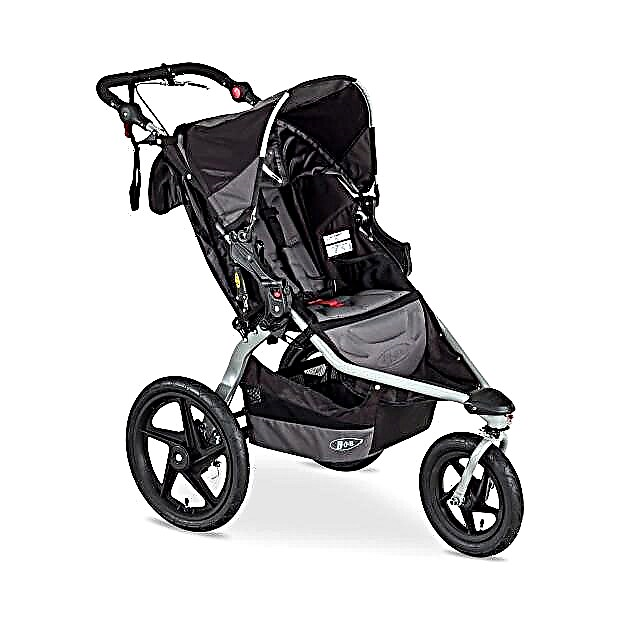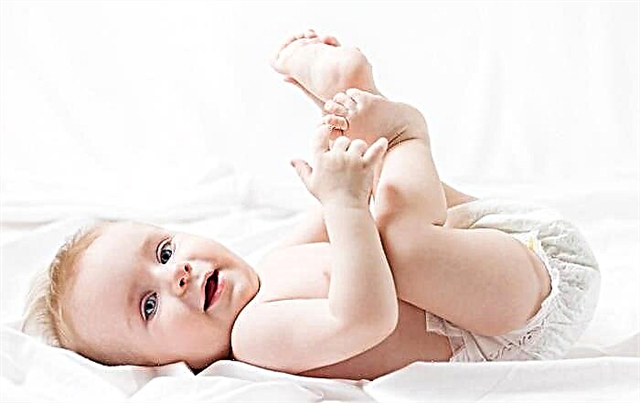
Very often, parents of elementary school students are faced with the need to develop attentiveness in their child. After all, successful training will not work without this. Due to age characteristics, it is still difficult for a child of 7-8 years to concentrate his attention for a long time. However, students who already cope with this, solve the tasks set by the teacher much faster and easier. Special games and interesting exercises can help develop mindfulness.


What is attention?
It is customary to distinguish three types of attention:
- Involuntary - appears unexpectedly, by itself. This is a response to a bright, catchy, making a lot of noise, arousing interest, but quickly disappears as soon as the subject becomes common. This type of attention prevails in children under 7 years of age.
- Arbitrary attention - the baby learns to control himself, doing not what is interesting to him at the moment, but what is necessary. He learns to focus on the task at hand. At the beginning of schooling, voluntary attention begins to develop.
- Post-voluntary attention appears when the baby is already carried away with the task and does not need any effort to focus on it.
Also, attention is divided into visual, auditory and motor-motor.
For the development of each of these types, you can choose the appropriate games and exercises.

Features of conducting classes
- Choose the right time. Do not distract your baby if he is passionate about something. Better to wait until it finishes its activity.
- Ask your household members not to bother you and the baby during class.
- Let the child fulfill the primary needs before starting the lesson: drink, go to the toilet, put away toys.
- Use non-standard methods in order to captivate the baby. It is better if they are accompanied by a lot of positive emotions on your part. Exercises should be interesting, understandable and accessible.
- Start with step-by-step instructions for implementation. Make sure that the child completes each point of the task to the end.
- Control your emotions. Classes should be held in a friendly atmosphere. You should not criticize the child, scold, raise your voice to him. Encourage, praise, smile, speak sweet words, provide the necessary help if needed.
- All mental functions are interconnected. The better the child's speech and memory are, the easier it will be for him to concentrate on something. Therefore, it is necessary to take care not only of the development of the baby's attentiveness, but also of his general intellectual development - to train memory, develop speech.
- Systematic and regular training is very important. Exercises "once after a time" you can hardly achieve success.

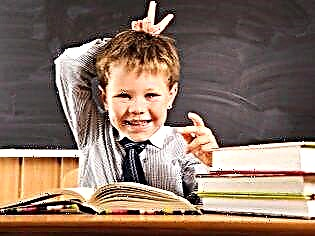
Useful games and exercises
To improve concentration.
Correction test
Offer your child a piece of paper with text printed on it. The font should be large. Ask your child to find as many of the same letter (for example, the letter "a") in the text as possible and cross it out with a pencil. The task is completed for a while. A child of 7-8 years old should have time to look through 350-400 characters in 5 minutes and should make no more than 10 mistakes. At the same time, the parent must control the baby, making sure that he searches strictly along the lines. Classes should be devoted to 7-10 minutes every day. Gradually, it can be made more difficult by increasing the number of letters to 5.

Encrypted letter
The kid is offered a sheet of paper with a set of letters of the Russian alphabet. Among them it is necessary to find words.
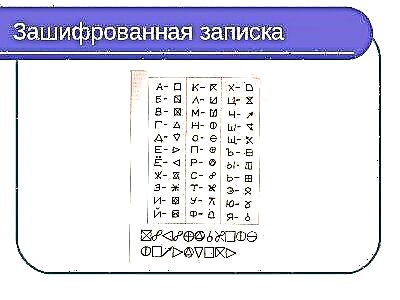
IPAODROTPMMANGSHGSHLDPSWASCHLRPACKAGESKPYOOPSRKYUTSYUNGYEYESASHIANISVZHSFUTORAKLOZHKATMVSVRODSHVCHSMIUUDMOLOKTSYAYAHIMVNLSHDSVRODZHD
- Labyrinths of different difficulty levels.


- Graphic dictations - drawings by cells.
The following games develop motor-motor attentiveness and ability to switch.


Game "Edible-inedible"
The presenter's task is to throw the ball to the players while calling the words. If the presenter named an edible object, then the player needs to catch the ball, but if it is inedible, the ball is repelled.

Piano
Players sit next to each other and place their hands on the knees of the neighbors to the right and left. You need to alternately clap your palms at a given pace. The first and last players slap the knee twice and play continues in reverse. A player who missed his clap or lost his tempo is eliminated from the game.
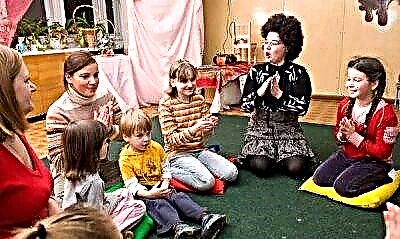
Forbidden movement
At the beginning of the game, all players agree on a move that will be forbidden, that is, it cannot be repeated. Further, the leader at a fast pace shows the players various movements that they must repeat after him. The player who repeated the forbidden move becomes the leader.

Game "Half-nose-ceiling"
Ask your child to show what you call. Name and show with him. When your toddler begins to easily cope with the task at a fast pace, complicate it. Now you can name one and show another. It should only show what you say.
For auditory care:
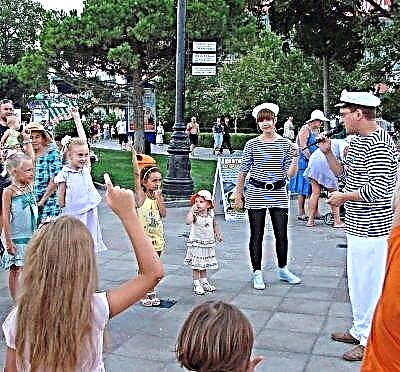
Find a pair
You need to take an even number of identical opaque bottles. Fill them with pairs of different contents. For example, two bottles - with sand, two more - with small stones, two more - with rice, the next one can be filled with coins, various cereals - peas, beans, semolina, twigs, rustling candy wrappers. You can think of many options. Take yourself one bottle with each filler, and give the second to the crumbs. Shake one of your bottles, the baby should listen carefully to the sound it makes. Now ask the child to find a pair among his bottles by the sound of yours.
Young children can be encouraged to find the same mittens.

Flapping
Ask the baby to clap the suggested rhythm behind you. Gradually complicate the task.

Guess the sounding object
Demonstrate the sound of various objects to your child. These can be wooden spoons, rattles, various musical instruments. Now ask him to turn away and guess what sounds.
Visual attentiveness develops:

Remember and tell
Place 5 different toys in front of your baby and ask him to remember them. Ask your child to turn away or close their eyes and hide one of the toys at this time. After the baby opens his eyes, he must name which toy is missing. Gradually complicate the task by increasing the number of toys to 10. This game can be carried out in another version. The toy must not be hidden, but their order must be reversed.

Didactic game "Paired pictures"
With the help of this game, the child quickly learns to look for similar pictures. Play is the best way to learn some rules, poems and develop attention with your child. But! As soon as the child becomes tired, the game should be stopped and continued after a few hours or the next day.

Repeat sequence
Cut various geometric shapes out of colored cardboard. They must be different in shape, color and size. Now lay out a certain sequence of them in front of the child and ask him to remember. Next, you need to mix all the figures into one pile and ask the baby to repeat the sequence that was in front of him. Start with 5 shapes. Gradually complicate the task by increasing their number.

Distribution of attention
Exercises are suitable for training in which the child needs to perform two actions at once at the same time. For example, you might ask to draw a circle with one hand and a square with the other. Invite your child to read the book and clap their hands or tap each sentence with a pencil after each paragraph. Have the child try to simultaneously touch the left ear with the right hand and the nose with the left hand, and then the right ear with the left hand and the nose with the right. This task must be completed as quickly as possible.

Toys to help parents develop mindfulness
Nowadays, in stores you can find a lot of a wide variety of educational toys for children of all ages. All of them will undoubtedly have a positive impact on the development of the mental functions of the baby.
For developing the ability to focus on an object, the following are well suited:

Constructors
For elementary school students, this can be a small lego. Or a metal constructor. You can also purchase an electronic designer, magnetic, constructors with moving parts or radio-controlled, transforming constructors for your baby.

Radio Controlled Toys
They teach the baby to concentrate on the movement of the model, help her overcome various obstacles, avoid collisions and damage. They teach the baby to concentrate on the movement of the model, help her overcome various obstacles, avoid collisions and damage.

Board didactic games, adventure games, dominoes, loto, puzzles, mosaics
All classes are very easy to do at home, giving them literally 20 minutes. Adults do not need any special skills or teacher education.

Small video lessons will help parents cope with such a problem in children.


